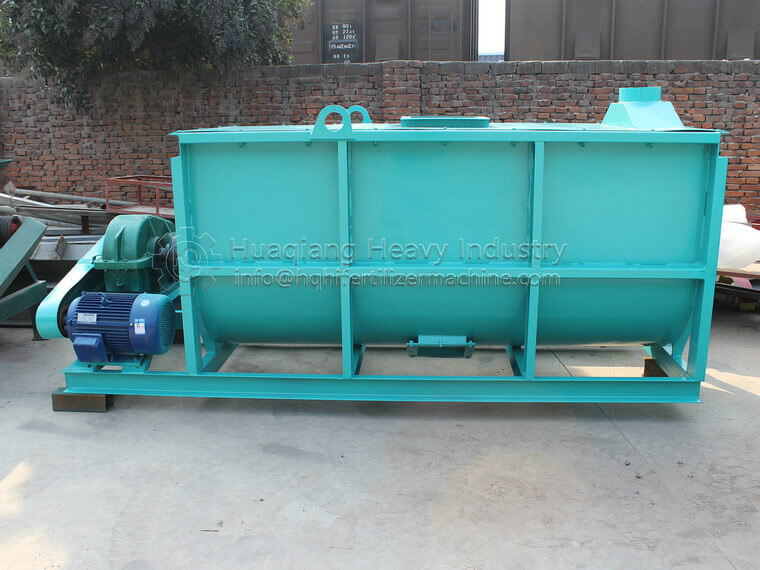When using a horizontal organic fertilizer mixer, in order to ensure the normal operation of the equipment, extend its service life, and ensure the safety of operators, the following points need to be noted:
1. Equipment inspection and maintenance
Regular inspection: Regularly inspect the wear and lubrication of key components such as the motor, transmission parts, bearings, mixing shaft, and blades of the mixer to ensure that the equipment is in good condition.
Cleaning and maintenance: After each use, the residual materials inside the mixer should be cleaned to avoid material clumping that affects the next use, while reducing corrosion and wear.
Maintenance records: Establish equipment maintenance records, including inspection dates, maintenance content, identified issues, and solutions, in order to track the health status of the equipment.
2. Operating procedures
Train operators: Ensure that operators have received professional training and are familiar with the equipment's operation manual and safety operating procedures.
Pre start inspection: Before starting, check whether the equipment is in a safe state, confirm that there are no foreign objects inside the mixer, and that all components are securely connected.
Correct feeding: Feed according to the maximum loading capacity specified by the equipment to avoid overload operation, while ensuring uniform distribution of materials and avoiding unbalanced loading.

3. Safety measures
Wear protective equipment: Operators should wear appropriate protective equipment such as work clothes, safety shoes, goggles, and gloves.
Emergency stop: Ensure that there is an emergency stop button near the equipment, and the operator should be familiar with the emergency stop procedure so that they can respond quickly in case of abnormal situations.
Avoid contact with rotating parts: During equipment operation, operators are strictly prohibited from touching the inside or rotating parts of the mixer to avoid safety accidents.
4. Environmental and material adaptability
Environmental adaptation: Ensure that the operating environment of the mixer meets the equipment requirements and avoid prolonged operation in extreme temperature, humidity, or corrosive environments.
Material adaptation: Understand the adaptability of the equipment to materials, avoid using materials that are too viscous, too hard, or have a high water content to prevent clogging or damage to the mixer.
5. Quality control
Uniform mixing: Ensure that the materials are thoroughly mixed during the mixing process to achieve the expected mixing uniformity, and adjust the mixing time and speed appropriately if necessary.
Monitoring the mixing effect: Regularly sampling and checking the quality of the mixed materials to ensure that the composition of the final product is uniform and consistent.
6. Energy conservation and environmental protection
Reasonable use: Adjust the operating parameters of equipment according to production needs to avoid energy waste.
Dust control: Take effective measures to control dust emissions during the mixing process, protect the health of operators and the environment.
Following the above precautions can ensure the safe operation of the horizontal organic fertilizer mixer, improve production efficiency, extend equipment service life, and ensure the safety and health of operators.